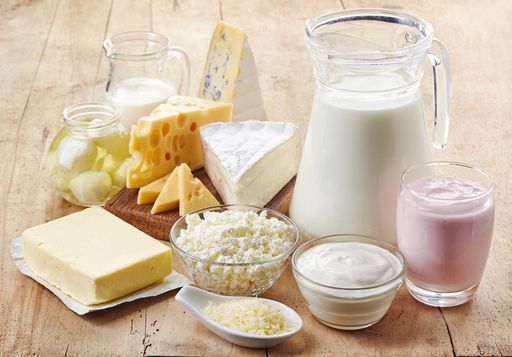If you eat a lot of raw vegetables and legumes, if you take care of your quota of 3 or 4 fruits per day, if you consume good vegetable oils and if you drink quality water, your body is most likely functioning optimally and you think you are sufficiently supplied with vitamins and minerals.
Stress and various environmental pollutions help, but this is not always the case and we know that the average population is deficient even in industrialized countries. Advancing age can also be responsible for a lesser assimilation or loss of nutrients. Unfortunately, the losses can be significant before a real health problem develops.
Summary of the most frequent deficiencies in our world of abundance
La vitamine D
The one that comes first is definitely vitamin D.

It is much more common in people who use high protection sunscreens. Researchers say with certainty that more than 50% of today's population is deficient in vitamin D, and certain segments of them such as the elderly or dark-skinned people show very significant deficiencies.
This deficiency generally becomes more pronounced after the age of 50. Small signs such as increased sweating and odor, weight gain, mild cognitive impairment, or recurring minor infections may be the first signs. You can quickly confirm this with a simple blood test in which your vitamin D level should be between 50 and 70 ng/ml (nanograms per milliliter).
The easiest and quickest way is to expose yourself to the sun in a smart way. The greater the surface area of the skin exposed to the sun, the greater the amount of vitamin D converted. It is therefore advisable to expose the legs, back, arms and torso, but it is better to protect the face. The duration of exposure should be short from 1/4 hour to a maximum of ½ hour. There is no point in exposing yourself much longer. On the one hand, you risk sunburn, on the other hand the skin has a self-regulating mechanism that blocks its synthesis of vitamin D from a certain duration of exposure, so there is no point in spending hours on it...
It is important to avoid exposure to the sun at the end of the day, because at this time it is the UVA rays that dominate, and these rays are more dangerous than the UVB rays that are more important during the day.
Opting for natural food, i.e., untreated with pesticides and non-GMO, is an added bonus, as glyphosate (the active ingredient in Roundup) has been shown to interfere with the enzymes that activate vitamin D conversion (at the liver and kidney level).
Les Omega-3
The second most frequent deficiency in our industrialized countries is that of omega-3, more specifically EPA and DHA fatty acids.

Across all causes of death, essential fatty acid insufficiency has been recognized as the 6th killer with the US population. The common diet is generally very rich in omega-6 fatty acids, fatty acids, which are very inflammatory and cause a number of health problems including cardiovascular disease, cancer, depression, dementia and Alzheimer's disease, rheumatoid arthritis, diabetes ...
There are easily identifiable external signs that may indicate a deficiency in omega-3: dry skin (like a crocodile, particularly on the arms), dandruff or dry and brittle hair, brittle and soft nails, significant fatigue accompanied by cramps or difficulties in paying attention and concentrating... Let's remember that the ratio between these two types of fatty acids should be 1:1, whereas for most people it is between 1 omega-3 and 20 to 50 omega-6. This is not surprising when we know that these bad fatty acids are found in processed foods, in industrial prepared meals, in French fries, etc.
Good fatty acids that should be consumed regularly can be found in sardines or other small oily fish that also contain many other beneficial nutrients such as vitamin B12, calcium or choline.
If one does not succeed in integrating enough fatty fish in the daily diet, it is possible to supplement with Krill capsules for example. This microscopic crustacean contains astaxanthin (antioxidant pigment) which protects the fragile omega-3 from oxidation. These will therefore remain fully available to reinforce all the cell walls (phospholipids) of the body and participate in the synthesis of hormones or neurotransmitters that require this type of fatty acid.
La vitamine K2
En troisième position on retrouve la vitamine K2.

La vitamine K existe sous deux formes principales :
La K1 : principalement trouvée dans les légumes verts feuillus, la vitamine K1 aide dans la coagulation sanguine.
La K2 : elle est pratiquement absente de notre alimentation, résulte de la fermentation et est produite par des bactéries. Elle est présente en grande quantité dans les intestins, mais ce n’est malheureusement pas là qu’elle est absorbée.
Lorsqu’on se supplémente en calcium et vitamine D dans le but d’avoir des os en santé, il est important d’y adjoindre de la vitamine K2. Ces trois nutriments ont un effet synergique. En effet, le calcium et la vitamine D sont dépendants de la vitamine K. La vitamine K2 active l’ostéocalcine nécessaire pour lier le calcium à la matrice osseuse. Cette même ostéocalcine prévient également les dépôts de calcium dans les artères et donc la calcification indésirable des vaisseaux sanguins.
Comme déjà cité, la vitamine D3 aide le corps à absorber le calcium. La vitamine K peut être considérée comme « agent de circulation », car elle permet à celui-ci de se placer où il est nécessaire. Sans l’aide de la vitamine K2, l’absorption de calcium, optimisée par la vitamine D3, pourrait se faire à des endroits indésirables, comme les artères coronaires. Il y a aussi des preuves que la toxicité de la vitamine D, bien que très rare sous forme de D3, est causée par une carence en vitamine K2.
Read the article on the benefits of vitamin K for the body.
Article source: mercola.com



